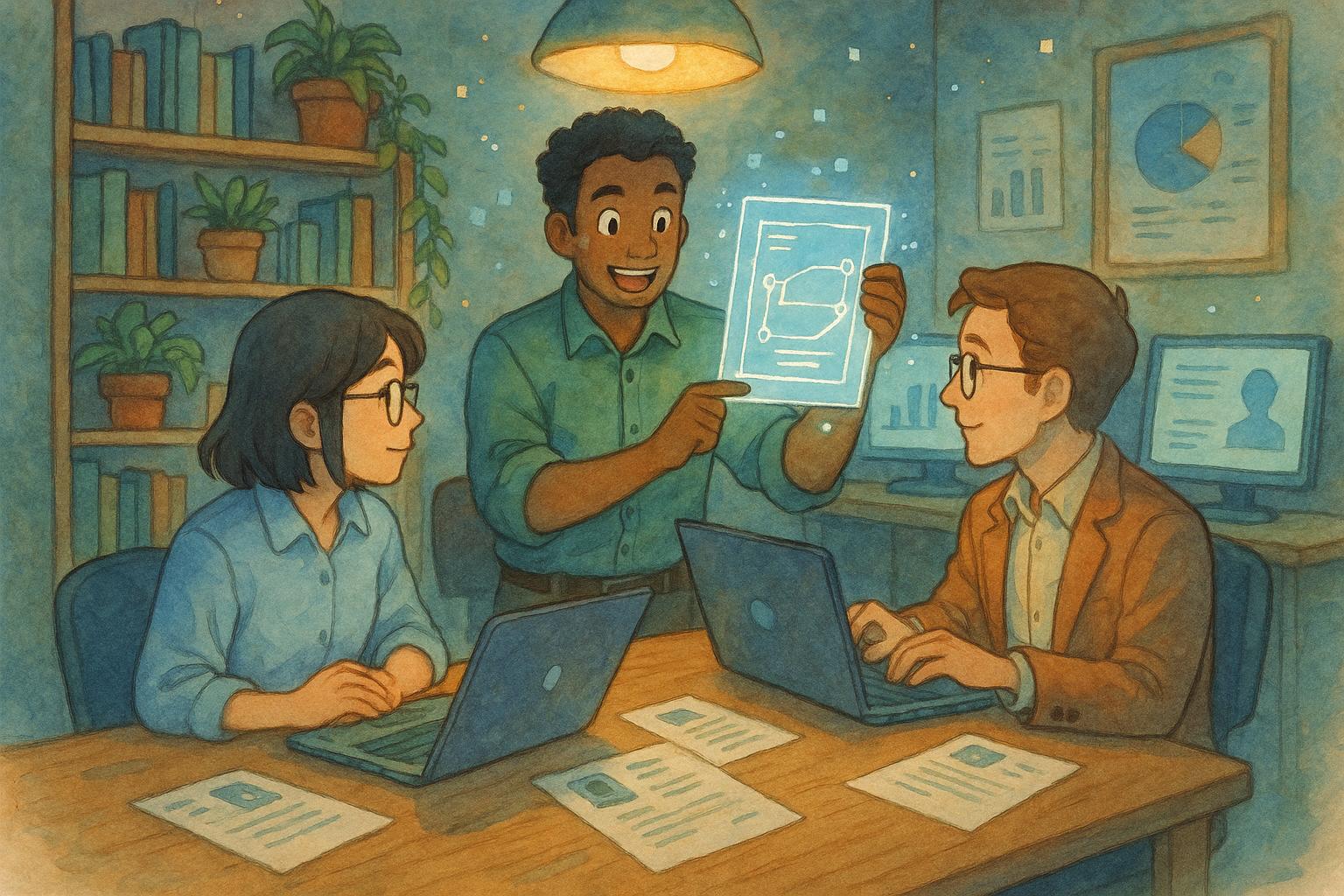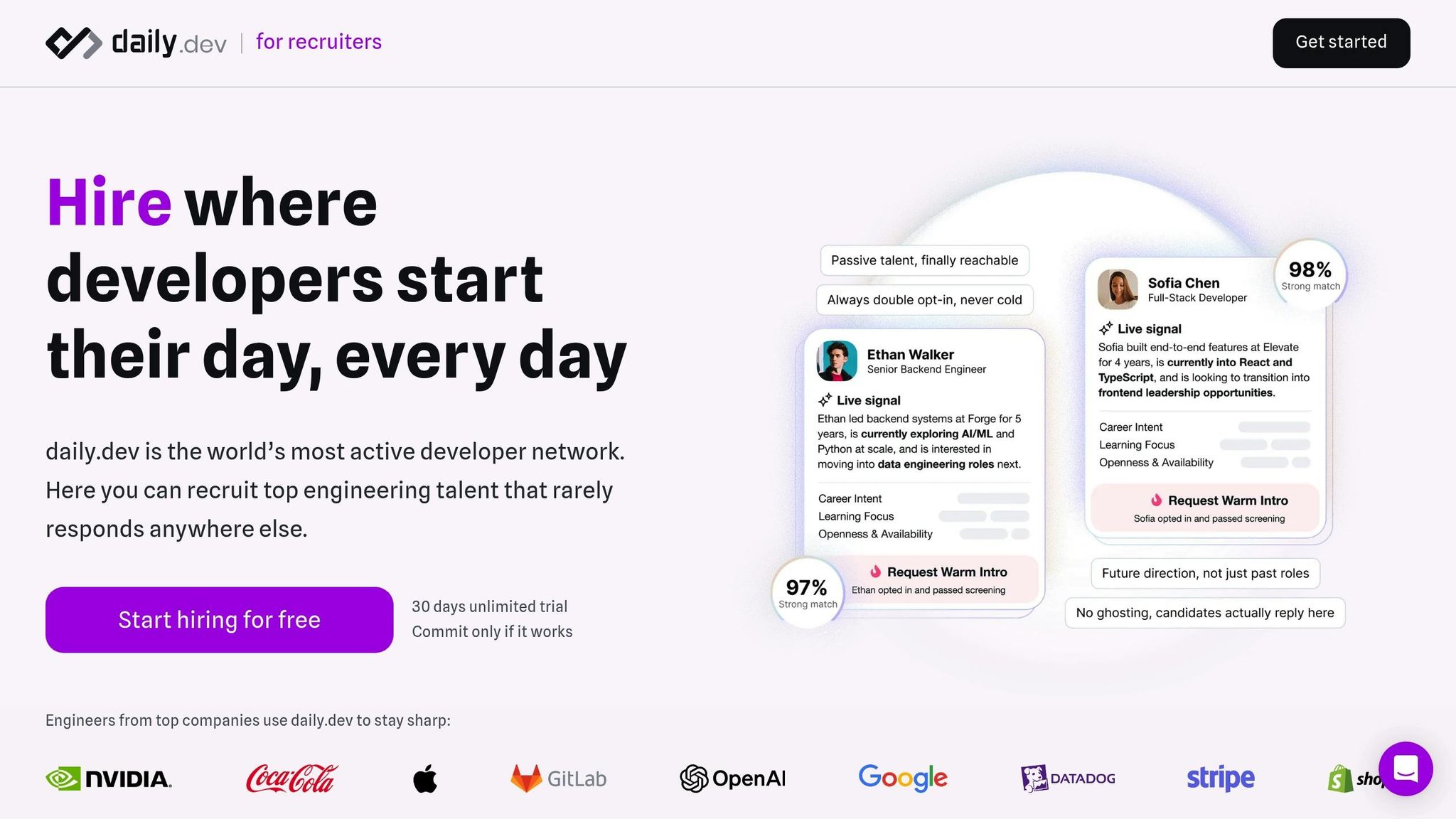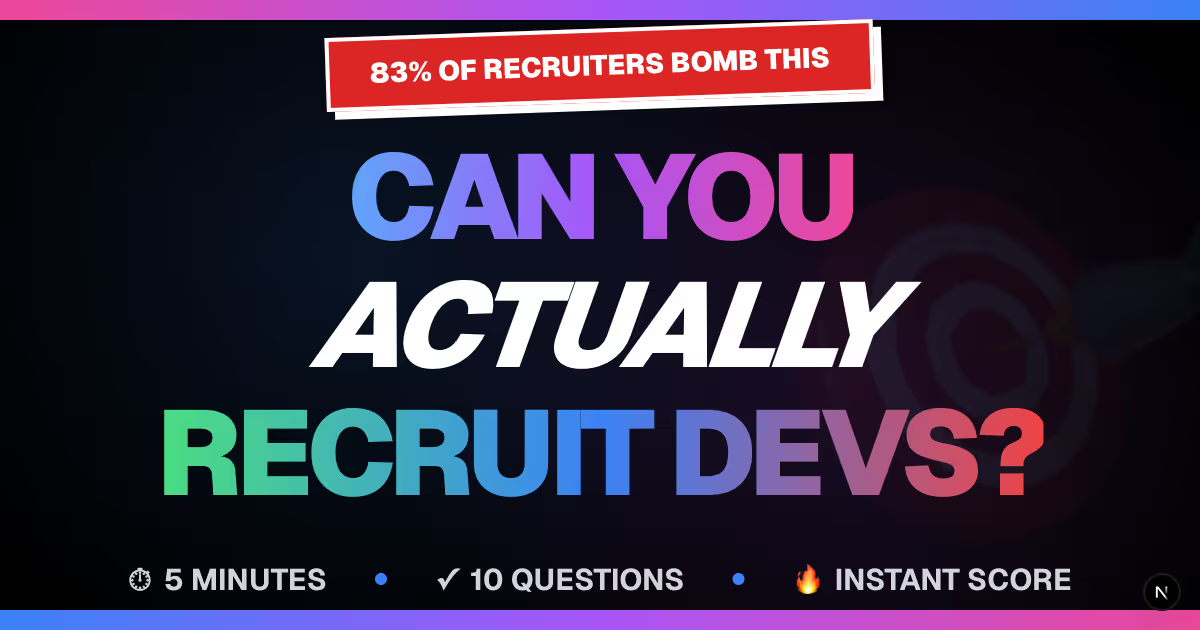


Skill mismatches in tech hiring stem from outdated practices and unclear requirements, but innovative solutions can bridge the gap effectively.
Hiring in tech is harder than it should be. Why? Because the skills companies need and the ones candidates bring often don’t match. Here’s the problem: unclear job descriptions, outdated hiring practices, and the rapid pace of tech innovation make it tough for companies to find the right talent.
But there’s good news: You can fix this. Solutions include running a skills gap analysis, using skills-based testing, improving job descriptions, and embracing tools like AI-powered recruitment platforms. These strategies help companies hire faster, reduce costs, and build stronger teams.
Key Takeaways:
- Why It Happens: Outdated job descriptions, fast-changing tech, and ignoring soft skills.
- The Impact: Slower hiring, higher costs, and missed opportunities.
- The Fix: Better hiring practices, skills testing, and modern recruitment tools like daily.dev Recruiter.
Get ahead by aligning your hiring process with what the tech industry demands today.
Why Are Tech Graduates Struggling to Find Jobs?
What Causes Skill Mismatch in Developer Recruitment
Skill mismatches often arise from flaws in the hiring process, and these issues tend to show up in several key areas.
Outdated Job Descriptions and Requirements
One major culprit is outdated or incomplete job descriptions. Many postings fail to include the critical details that define the role, leaving a gap between what’s advertised and what the company actually needs. This lack of clarity creates what Nimrod Kramer from daily.dev calls "broken context." He explains:
"The silent killer of recruiting is misaligned expectations between recruiters and hiring managers. Recruiters and hiring managers are often misaligned, and it silently kills hiring. Learn why broken context is the real problem, and how trust can fix it."
When job descriptions don’t reflect the role’s true expectations, potential candidates may either skip applying or apply without realizing their skills don’t fully match.
Fast-Changing Technology
The tech world moves at lightning speed. New frameworks, tools, and methodologies are constantly emerging, and companies must adapt their hiring needs to keep up. Fields like AI, machine learning, and blockchain are growing fast, creating an urgent demand for specialized expertise. This rapid evolution makes it challenging to find candidates with the exact skills required for cutting-edge projects.
Overlooking Soft Skills and Transferable Abilities
While technical expertise is non-negotiable, soft skills like communication, problem-solving, and teamwork are just as important for long-term success. Unfortunately, many traditional hiring processes focus solely on coding ability, missing out on these essential qualities. A well-rounded evaluation should look beyond a resume to include work history, personal interests, and growth potential. Ignoring these factors can lead to mismatches between a candidate’s abilities and the team’s evolving needs.
How to Fix Skill Mismatch
Bridging the gap between the skills your company needs and those available in the market starts with rethinking how you identify, evaluate, and develop talent. Here's how to tackle skill mismatches effectively.
Run a Skills Gap Analysis
The first step is understanding the difference between the skills your organization requires and the ones your team currently possesses. Conducting a thorough skills gap analysis not only informs smarter hiring decisions but also pinpoints areas where your existing workforce could benefit from additional training. Start by clearly defining the criteria for each role and using targeted screening questions to identify must-have skills. Beyond that, take a holistic view of candidates by considering their work history, current interests, and future aspirations. This approach ensures you’re not just meeting immediate needs but also aligning with your company’s future goals and technological direction. Modern recruitment platforms can help by offering insights into developers' skills and career objectives, matching them with the right opportunities. Finally, validate these insights through practical, skills-based assessments.
Use Skills-Based Testing
Once you’ve identified the gaps, it’s time to focus on evaluating real-world skills. Use technical tests and problem-solving scenarios that mirror actual job responsibilities. This method helps you assess how candidates handle complex challenges, communicate their thought process, and adapt to new information. By designing these tests to reflect the day-to-day demands of the role, you’re more likely to find candidates who can contribute effectively from the start.
Encourage Continuous Learning and Upskilling
In the ever-changing tech industry, even the best candidates need to keep their skills up to date. Creating a culture of continuous learning helps your team stay agile. Offer opportunities like access to learning platforms, attendance at industry conferences, certifications, and mentorship programs. As highlighted by daily.dev Recruiter:
"Developers come to daily.dev every day to stay sharp on tools, technologies, and trends".
This kind of support not only benefits your current team but also makes your company more attractive to prospective talent.
Revamp Job Descriptions and Hiring Practices
Traditional job descriptions often create unnecessary barriers. Instead, craft concise, developer-friendly postings that clearly outline the role and your company’s goals. Focus on core competencies while aligning the position with candidates' career aspirations. Adding targeted screening questions can help uncover details that might not fit into a standard job posting. Providing this level of clarity upfront allows candidates to better evaluate their fit for the role, reducing the risk of mismatched expectations later in the process.
sbb-itb-d1e6221
How Technology Helps Solve Skill Mismatch
Technology has reshaped the way businesses find, evaluate, and hire the right talent. Modern recruitment tools now go far beyond just scanning resumes. They offer precise matching, in-depth assessments, and data-driven insights that tackle many of the root causes behind skill mismatches. Let's look at how these tools are helping to bridge the gap in candidate evaluation and matching.
Use AI-Powered Recruitment Tools
AI-powered recruitment platforms have changed the game when it comes to matching candidates with roles. These tools analyze skills, work history, interests, and career goals to pair job opportunities with candidates who are a true fit. This means candidates see opportunities tailored to their profiles, not just generic listings. For example, platforms like daily.dev Recruiter use custom screening questions to pre-qualify candidates, ensuring that introductions are meaningful rather than cold outreach. The results speak for themselves: reply rates for introductions through daily.dev Recruiter regularly hit 85–90%.
Add Skills Assessment Platforms
Skills assessment tools are critical for verifying that candidates meet the technical requirements of a role before moving forward in the hiring process. These platforms streamline hiring by reducing the need for endless screening calls and ensuring only qualified candidates advance. For instance, daily.dev Recruiter uses up to three custom screening questions to confirm that developers align with job descriptions and specific hiring needs. This double opt-in process ensures warm introductions, making matches more effective. These assessments also address gaps in traditional job descriptions, connecting opportunities with developers' actual skills and career aspirations.
Apply Data Analytics for Talent Planning
Data analytics turns hiring into a proactive, strategic process. By analyzing trends in skills, hiring patterns, and market demands, companies can predict emerging skill gaps and prepare accordingly. This approach helps businesses identify candidates for evolving technology needs before those gaps become critical. As daily.dev Recruiter puts it:
"Most platforms give you a database of profiles. With daily.dev, you get warm, double opt-in introductions from developers already engaged on our platform. It's a distribution channel powered by developer attention, not another search tool."
This move from passive profile searches to active, attention-driven matching creates stronger connections. Plus, data analytics helps fine-tune the hiring process by tracking which matches lead to successful hires and adjusting criteria based on the traits of top-performing employees.
How daily.dev Recruiter Fixes Skill Mismatch

Instead of wading through endless profiles, daily.dev Recruiter connects employers with a dynamic community of developers who are already active and engaged. Built on a network where developers participate daily, the platform bridges the gap between talent and opportunities that genuinely match their skills. This focused approach addresses one of tech hiring's biggest challenges: skill mismatches.
Connecting Employers with Engaged Developers
daily.dev Recruiter taps into its trusted developer network to link employers with candidates who are serious about advancing their careers. Forget cold outreach - this platform ensures employers connect with developers who are already invested in their professional growth.
The system is designed to show opportunities only to developers whose skills, interests, and career goals align with the role. Using proprietary insights, it matches candidates based on their expertise and aspirations. Once a developer expresses interest in a job, they’re further screened against the employer's criteria, including up to three custom questions that validate key requirements.
Warm and Double Opt-In Introductions
At the heart of daily.dev Recruiter's approach is its dual opt-in process. Unlike the scattershot methods of traditional recruiting, every introduction involves a developer who has actively chosen to engage with a specific role.
"Every introduction is double opt-in, which means the developer has already reviewed the role and agreed to the conversation." - daily.dev Recruiter
By the time a developer is introduced to an employer, they’ve already confirmed that their skills align with the job. Early data shows that this method works - reply rates for these introductions consistently hit 85–90%.
Prioritizing Skills and Intent
daily.dev Recruiter focuses on more than just resumes. Employers get a detailed view of each candidate, including their work history, current interests, and future goals. Job postings are displayed privately within daily.dev, ensuring that only the most relevant candidates see them. Developers also receive complete role details upfront, allowing them to engage only if the opportunity truly fits their career path.
Key Points on Fixing Skill Mismatch
Addressing skill mismatch starts with evolving from outdated recruitment practices to more precise, technology-driven strategies. The key lies in seeing developers as multifaceted professionals rather than just a collection of skills on a resume.
Skills-based matching is at the heart of effective hiring. This approach goes beyond basic keyword searches, focusing on a candidate’s technical expertise, professional goals, and current interests in context. Companies that implement thorough screening processes - like customized questions tailored to the hiring manager’s specific needs - report stronger alignment between candidates and roles. This emphasis on detailed evaluation lays a solid foundation for meaningful engagement.
Another essential factor is the value of warm introductions. When developers opt into opportunities after reviewing detailed role descriptions, response rates soar, often exceeding 85–90%. This method eliminates the inefficiency of cold outreach, ensuring conversations begin with mutual interest and relevance.
Expanding on engagement tactics, proactive engagement within familiar platforms proves more effective than traditional outreach. Instead of bombarding developers with unsolicited messages, successful companies present opportunities in spaces where developers are already active - places they use to learn and grow. This strategy taps into the "passive talent" pool, which includes the 90% of developers who typically avoid conventional recruitment channels.
While technology plays a pivotal role, it should complement human judgment rather than replace it. AI-powered tools are most effective when they provide a comprehensive view of candidates, including work history, aspirations, and interests, rather than just matching keywords to job descriptions.
Data highlights the advantage of specialized platforms built for developer engagement. These platforms connect companies with unique talent pools, with 1 in 50 developers worldwide participating in such networks. Notably, 40% of these networks consist of senior contributors and leaders. Leveraging these communities gives companies access to pre-vetted candidates who are both highly skilled and actively interested in new opportunities.
Ultimately, success in tackling skill mismatch hinges on building trust with the developer community. When hiring processes respect developers' time and expertise - offering relevance and value instead of interruptions - the result is better matches, quicker placements, and stronger long-term retention.
FAQs
What steps can companies take to identify and address skill gaps in their tech teams?
To pinpoint and address skill gaps within tech teams, companies should begin with a skills gap analysis. This process involves evaluating the team's current capabilities, comparing them to the skills required for both ongoing and upcoming projects, and identifying where the gaps lie.
Here’s how to approach it:
- Define the necessary skills: Determine the technical expertise and soft skills required for each role, aligning them with the company’s goals and project demands.
- Assess current skills: Use methods like self-assessments, manager evaluations, or hands-on tests to gauge the skills your employees already possess.
- Spot the gaps: Compare the team’s existing skills to the outlined requirements and document where there are shortfalls.
After identifying these gaps, companies can take action through tailored solutions like training sessions, mentorship programs, or hiring skilled developers. Tools like daily.dev Recruiter simplify this process by connecting you with developers who match your team’s needs, using a developer-focused approach that prioritizes trust and engagement.
How can AI-driven recruitment tools help match candidates' skills to job requirements more effectively?
AI-powered recruitment tools are transforming how employers and job seekers connect by matching candidate skills with job requirements more effectively. These tools analyze massive amounts of data to pinpoint the exact skills, experiences, and qualifications that align with a role. The result? Recruiters and job seekers save valuable time by focusing only on the most relevant matches.
Beyond hard skills, AI also evaluates candidates on softer aspects like adaptability, learning potential, and how well they might fit within a company's environment. Tools like daily.dev Recruiter take this approach further by linking employers with developers who are already engaged and pre-qualified, streamlining the hiring process and building confidence in the selection process.
Why are soft skills and transferable abilities crucial in tech hiring, and how can companies effectively assess them?
Soft skills and transferable abilities play a key role in tech hiring because they go beyond technical know-how. These skills - like communication, teamwork, and the ability to adapt - are what often drive long-term success in a position. While technical expertise gets your foot in the door, these qualities help you thrive in dynamic roles, collaborate seamlessly with teams, and tackle complex challenges.
To assess these abilities, companies can rely on methods like structured behavioral interviews, situational questions, or even collaborative tasks as part of the hiring process. Tools like daily.dev Recruiter also make it easier for employers to find developers who not only bring technical talent to the table but are also engaged and open to meaningful career opportunities. This approach helps ensure a stronger alignment between candidates and the roles they step into.
Related Blog Posts








